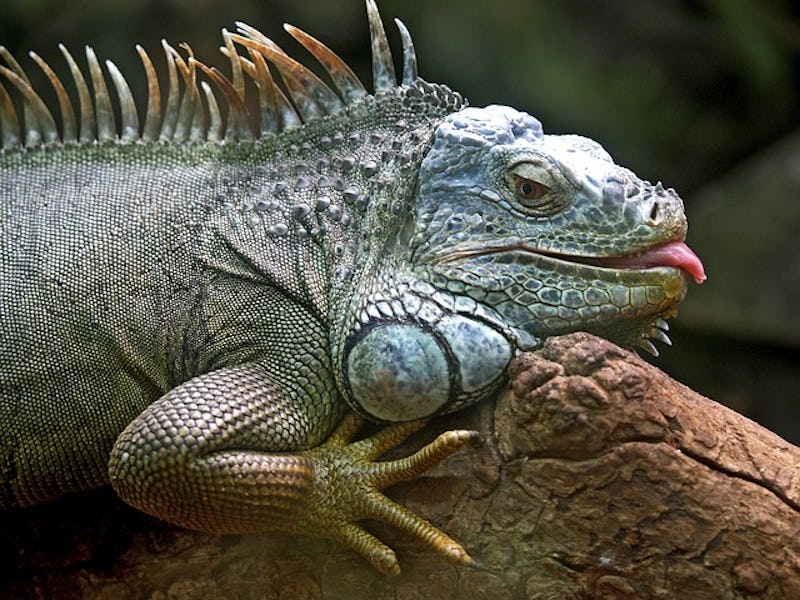The Bizarre Reason Iguanas are Falling From Trees in South Florida
No, they're not dead. Yet.

A massive snow storm storm blanketed the east coast of the United States on Thursday, forcing millions to huddle inside for warm and fuzzy comfort. But even where it didn’t snow, the frigid temperatures brought by this so-called Bomb Cyclone caused an even stranger form of precipitation: frozen iguanas.
As people started venturing from their homes in the wake of the lousy weather, social media users and local news stations in South Florida began to post photos and videos of these lethargic lizards on the ground, looking pretty lifeless. They’re not dead, though. They’re just really, literally chill. This scene may look apocalyptic or creepy, but there’s actually a really simple biological explanation for the iguanas’ startling behavior: They can’t handle the cold.
Like all reptiles, iguanas are cold-blooded, depending on the warmth from their environments to survive. They climb up into high places to hang out during the day and soak up the sun. They spend a lot of their time in trees, on top of people’s roofs, and in other high places where they can bask for warmth and keep their internal parts active.
When it gets cold, the chemical processes that keep their muscles and organs moving also go cold, and this ectothermic change forces them to slow down and turn into beasts of torpidity.
The green iguanas that inhabit South Florida are members of an invasive species native to Central and South America, where temperatures rarely fall below 40 degrees Fahrenheit. The Bomb Cyclone didn’t bring the white powder to Miami, but it did put the region on a frosty tune, and iguanas were some of the first to feel it — especially the ones high up in the trees. Once they’re bodies shut down, they’ll lose their grips and plummet to the surface.
People in South Florida are actually pretty accustomed to finding stunned iguanas on their patios and parking lots when the weather gets cold, but the sight never gets old. Some kind souls even move the frozen green guys into the sun to warm up.
“Even if they look dead as a doornail — they’re gray and stiff — as soon as it starts to heat up and they get hit by the sun rays, it’s this rejuvenation,” Ron Magill, communications director for Zoo Miami told The New York Times. He added that during these times, we can actually see natural selection in action. “The ones that survive that cold streak are basically passing on that gene.”
That being said, if you choose to pick up an iguana to move it, you risk getting bitten, clawed, or even tail-whipped. If an iguana wakes up while it’s in your warm hands, it could get startled and respond violently. Grappling with a pissed off six-foot lizard on your hands doesn’t sound great? So if you come across a drunk- or dead-looking iguana, just let it be. And don’t worry: It’s probably not dead.